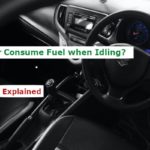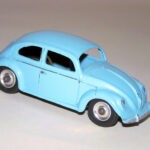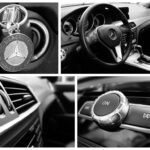6 Reasons Why You Shouldn’t Leave Your Car in the Sun
A car can easily become a microwave oven if it sits in the sun for an extended period. Cars exposed to warm, and humid temperatures will have adverse effects.
These can range from destroying your car’s interior and exterior look to suffocating or killing your dog if left inside. It may not seem like a big deal, but always leaving your car in the sun can have consequences.
1. The Exterior Becomes Very Hot
Vehicles are made of metals, and metals absorb heat very easily. Exposing your vehicle to the sun continuously can turn your car into a frying pan.
Under direct sunlight, your car is absorbing the hot rays directly from the sun. After a few minutes, it starts to get warm, and that’s all it takes for your car’s surface to become very hot.
If you’re about to wash the car at that moment, it would almost be impossible. As soon as you pour some water on the car, you’ll see vapor coming off it as it tries to cool down first.
The bodywork of your car may also start to deform over time as it heats up and cools down. This may eventually lead to cracks in the bodywork, which may be expensive to fix and hurt resale value
Fun fact: Darker colored cars, especially black, absorb more heat than lighter colored cars. This means in similar conditions, a darker-colored car will be hotter than a lighter car.
Also read: 10 Cars Under $20K that Look Like They’re for $50K+
2. Interior Temperatures Rise Quickly
A vehicle parked in the sun for just 10 mins can reach temperatures of 89-114˚F. After an hour it could be anywhere between 113-140˚F. This is dangerous to the car and whatever is inside it. Light comes in through the car’s window, but heat can’t get out and in most cases, the car’s temperature exceeds the outside temperature.
The car becomes a microwave waiting to warm up any content it has inside. Anything inside the vehicle becomes hot as the temperature rises. Without proper air conditioning to cool the car down, you will need to roll down the windows and wait for the car to cool down.
Furthermore, anything left inside the car will be affected by this heat. Cold drinks become hot, ice creams will melt and luggage will be hot too.
The most dangerous part is leaving a person or pet in this condition. Most people may think they won’t stay long in the store or bank, so they leave children or pets in a locked car. Temperatures of 106-109˚F are enough to leave a lifeless body in your car. Cracking the windows down a little does little to prevent heatstroke.
Trending Video: How to Easily Bring Back to Life any Old Car Battery and Save Tons of Money (click to watch)
From 1998-2018, a study shows that 54% of children have been left in the car by their babysitters. 24 children died in hot cars in 2020, 46 died in 2019. There is an average of 38 deaths in hot cars per year.
3. Paint Fade
Over time your paint will fade if not taken care of, it’s inevitable. But keeping it under the sun will accelerate the process. Just like tanning your body, the sun will tan your car into losing its color.
Paint is a very sensitive mixture of pigments to achieve the desired color you see. Even a basic color like white has been mixed carefully to get the shade or effect you see.
Contaminants getting into this mixture will affect the outcome. Exposing your paint to constant sunlight and extreme temperature will change its look and effect.
An example is a white car that becomes yellow over time, the shiny effect also becomes dull. The texture also changes from a smooth surface to a rough, dry surface. This makes the car look bad and age quickly. Your paint can get destroyed by sunlight in 5-10 years, if it’s a used car this could be sooner.
Fun Fact: All colors fade at the same rate but because of the way our eyes work, darker colors show their fade quicker than lighter, vibrant colors.
Also read: Should You Warm up Your Car in Summer? Is it Bad?
4. It Disintegrates the Interior
Leather surfaces don’t do well in these conditions. They absorb heat as the car gets hotter, which makes them get softer. Over time as they get hot and cold they may become brittle and start to break.
Leather surfaces aren’t the only parts that suffer in the interior. Plastic parts are also affected. As the temperature rises, they also deform under the heat and change shape. This leads to most buttons not and switches not being able to perform their function properly.
The appearance of these plastic surfaces also doesn’t look great. After several heat cycles, they look like too much glue had been applied on the surface and not properly wiped off.
Both leather and plastic suffer in high temperatures.
5. System Failure
Vehicle electronics and systems rely on optimal temperature to work well. If they’re too hot, they may perform poorly or even go bad. Constant heat is an enemy to electronic components.
New cars all come with screens of different sizes. If exposed to sunlight, they may start to warp like the rest of your interior. This will lead to malfunctioning, pixelated, or even blind screens, eventually, they won’t work anymore.
Teslas are common for having screen issues, and adding heat to it will render the car useless.
Brake lights and headlights can also go bad. Sunlight can cause warping on Headlight and taillights too. It starts with the yellowing effect on the headlights, which may eventually lead to a crack. Cracks allow water into your lights, which eventually damage them.
Newer cars have been built with the proper protection to their parts but exposing them to excess sunlight will eventually take its toll on the sensitive computer parts.
Also read: Are Black Cars Hard to Keep Clean? (No, if You do This!)
6. Problems with Parts e.g. Battery, Engine, and Tires
Living in a hot area can cause your car to overheat and not perform optimally. Just like interior plastic, rubber and plastic parts may be exposed to excessive heat can disintegrate over time. Eventually, you may have a busted coolant line, brake line, oil line, or even fuel line.
Apart from simple components, metals parts like the engine block can warp under excess heat. This is similar to your exterior deforming due to exposure to excess sunlight.
Normally, your engine starts cold, but if exposed to heat from the sun for too long, it starts warm. The water in the radiator will be hot too and if it can’t cool down quickly then it can’t cool the engine, which limits performance.
This problem can extend to many parts, like your battery. Heat cause battery fluid to evaporate, slowly degrading your battery life.
Your tire pressure could also increase, decrease, or even disintegrate over time in hot weather. Just like other rubber parts, your tire could warp, leading to an increase or decrease in pressure. Disintegration is also very likely, tires should be checked regularly for these issues.
How to Protect Your Car from the Sun?
Keeping your car in a garage or storage is one of the many options to keep your car away from the scorching sun. If you don’t have access to one, then having a car cover can help a lot when not in use.
There are several measures to protect your car from sunlight when not in use. They include:
- Parking in shades: Simple but effective. Parking your car under a shade will greatly reduce the impact of direct sunlight on your vehicle. When UV rays don’t hit your car directly. The heat isn’t much, and the long-term effect is less.
- Garage Parking: If you have a garage or access to free parking in one, take advantage of it. This will protect every part of your car and keep it looking great for a long time.
- Window Protectors: My dad still parks his car outside in the heat, but he uses window shades. These shades help reduce the direct effect of heat on your leather and plastic parts.
- Seat Covers: Good quality seat covers will help protect your leather seats from warping. Instead of your seats getting spoiled, the covers take the damage and can easily be replaced.
- Window Tinting: If you’ve been in a tinted vehicle, or you have one, then you know how much of a difference a tint makes. It greatly reduces the penetration of sunlight in your vehicle. Just make sure to abide by the tint laws in your state. Most states have a limit on how dark your tint can be.
- Paint protection Film: This innovation has been around for a while, it is a transparent film that can be applied on the whole car. If done properly, it also has the added benefits of protecting your paint from scratches and dust. The cost is something to be considered, as most film installations start around $300 for selected parts to as much as $10,000 for full protection.
Also read: Is it Worth Keeping a Classic Car? (+Best Cars to Keep)
What Things Shouldn’t You Leave in Your Car if You Park it in the Sun?
Anything that can easily melt or deform should not be left in your car. These include:
- Make-up
- Food and drinks: Drinks will get hot and your burger will deform
- Plastic bottles: They warp under hot weather
- Art
- Medication: Heat can render them less effective.
- Hand sanitizers: Alcohol based solution evaporates quickly in the heat.
- Candles: We all know they melt.
- Battery: Small or large, they can become dangerous as they can leak under high temperatures.
- Lighters: A real fire hazard.
- Pressurized Canisters: Adding heat only increases the risk of an explosion
In conclusion, sunlight may be great for the body and essential for survival. But just like anything we do, when done in excess can have adverse effects.






